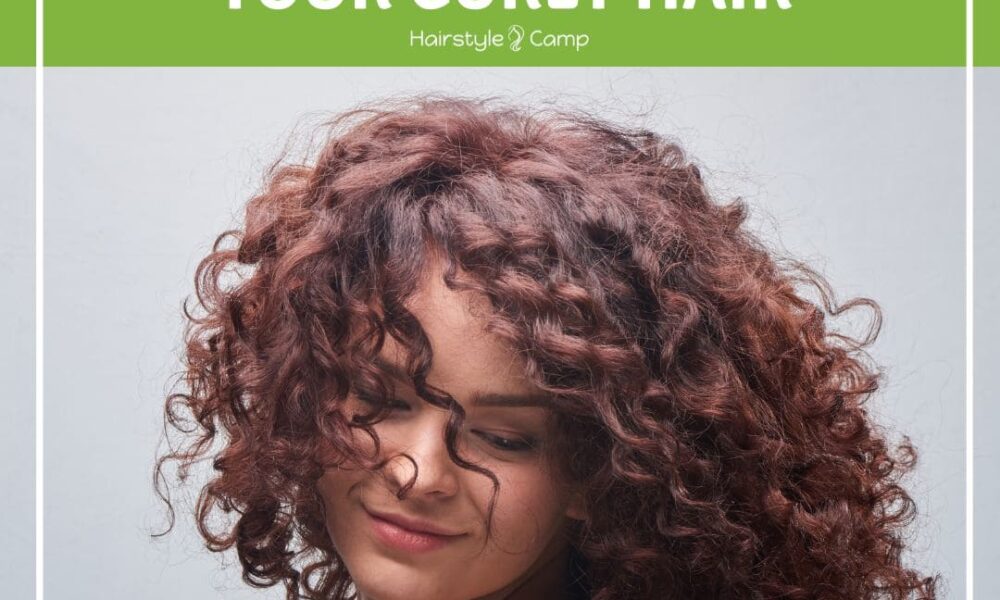
Ultimate curly hair care guide
If you have curly hair, you know it can be a bit of a challenge to manage. Curly hair is more prone to dryness and frizz, and it can be difficult to find products that work well.
There are several ways to treat curly hair. What works best may vary from person to person.
In this blog post, we will discuss the best ways to care for your curly hair.
What leads to curly hair?
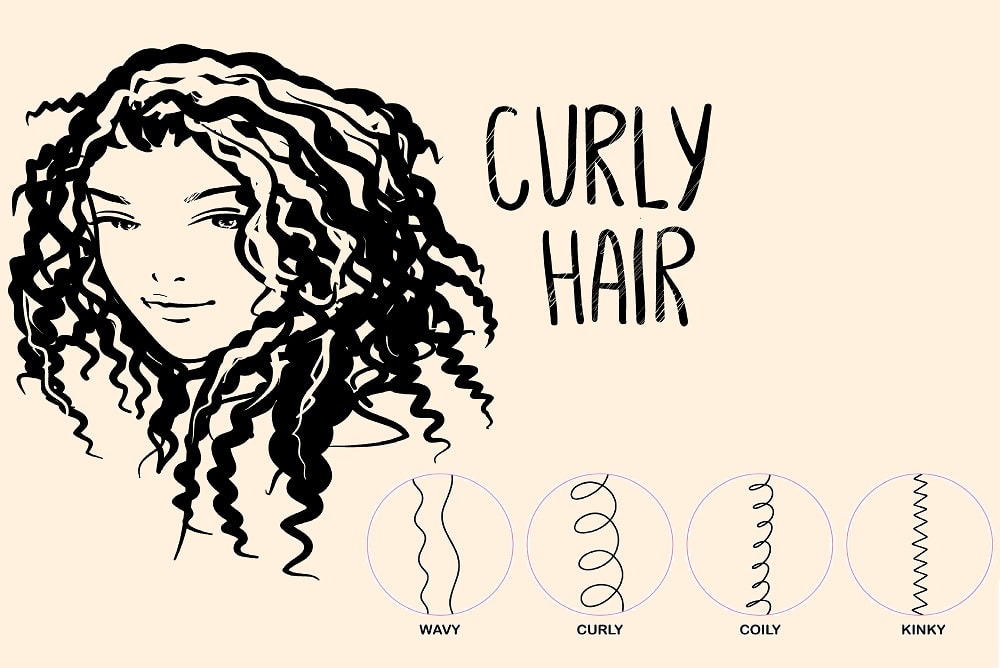
Curly hair describes textured hair with an S-shaped curl pattern rather than a straight or wavy growth pattern. The natural shape of curl patterns means it tends to be drier than straight hair.
This happens because while the cuticles on straight hair lie flat and trap moisture within the hair strand, the shape of curly hair prevents it from holding on to water as effectively.
Ultimately, there is no one reason for curly hair. The result of curly hair is many different factors that come together in unique ways.
One of the most important is genetics, as specific genes are responsible for determining the shape and texture of your hair follicles.
Depending on how their hair reacts to internal and external conditions, some people have more wavy strands. Environmental factors and health conditions can affect hair growth, resulting in strands curling outwards or tighter, frizzier curls.
Certain chemicals, such as those in heat styling products, can also change the texture of hair by damaging its delicate protein structure.
Lifestyle habits, such as heavy sun exposure or repeated use of flat irons and blow dryers, can contribute to frizzy locks. Frizz is a problem for curly hair. Air dry your curly locks to avoid these problems.
Whether your curls are tight or loose, there are many ways to care for and style this beautiful feature. With the right products and techniques, you can keep your curls looking healthy and vibrant, no matter the weather.
The curly hair population
as per TextureTrends Report by NaturallyCurly.comAbout 65%-70% of people in the US has curly hair. This number is likely to be even higher among specific populations, such as those of African and Caribbean descent.
While some may see their curls as a burden or inconvenience, others embrace them as a source of pride and beauty. No matter one’s perspective, recognize the prevalence and cultural significance of this beautiful natural feature.
How to care for curly hair: tips and best practices
There are many things you can do to care for curly hair.
#1. Wash your hair weekly
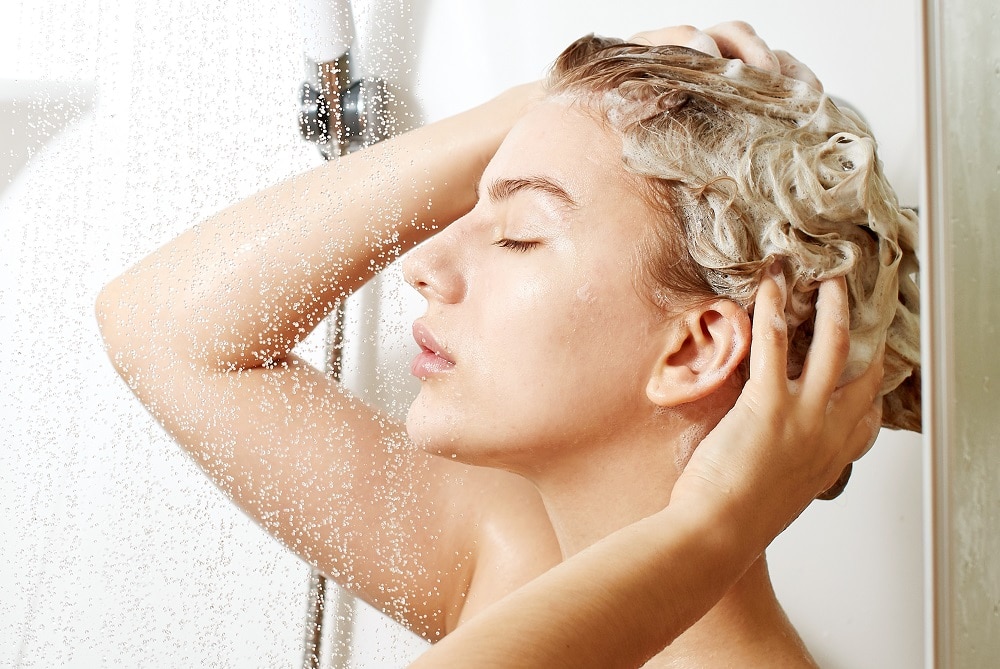
Washing curly hair is an essential part of maintaining healthy and vibrant curls. Not only does regular washing help keep your scalp healthy and free of bacteria and excess oils, but it can also help prevent frizzy, unmanageable curls.
First and foremost, washing is significantly less drying to curly hair than letting oil and dirt build up for days. Not washing your hair tends to create a build-up of residue that can lead to increased breakage and damage over time. However, not washing your hair in large quantities (that is, more frequently than once a week), is essential to maintaining its health.
Plus, using gel or products on damp hair can help lock in moisture while you style, ensuring your curls look their best no matter the weather or occasion.
#2. Use the right shampoo
When shampooing curly hair, consider some key factors to prevent dry hair. Certain ingredients in shampoo can cause more damage to your curls and make them brittle by disrupting your natural oils.
For example, sulfates are a common shampoo additive known to be particularly damaging to curly locks. These chemical based cleansers can strip hair of its natural oils and leave it dry and unmanageable.
Therefore, it is better to look for shampoos made with natural extracts and other gentler ingredients, such as aloe vera and coconut oil.
#3. Be generous with conditioner
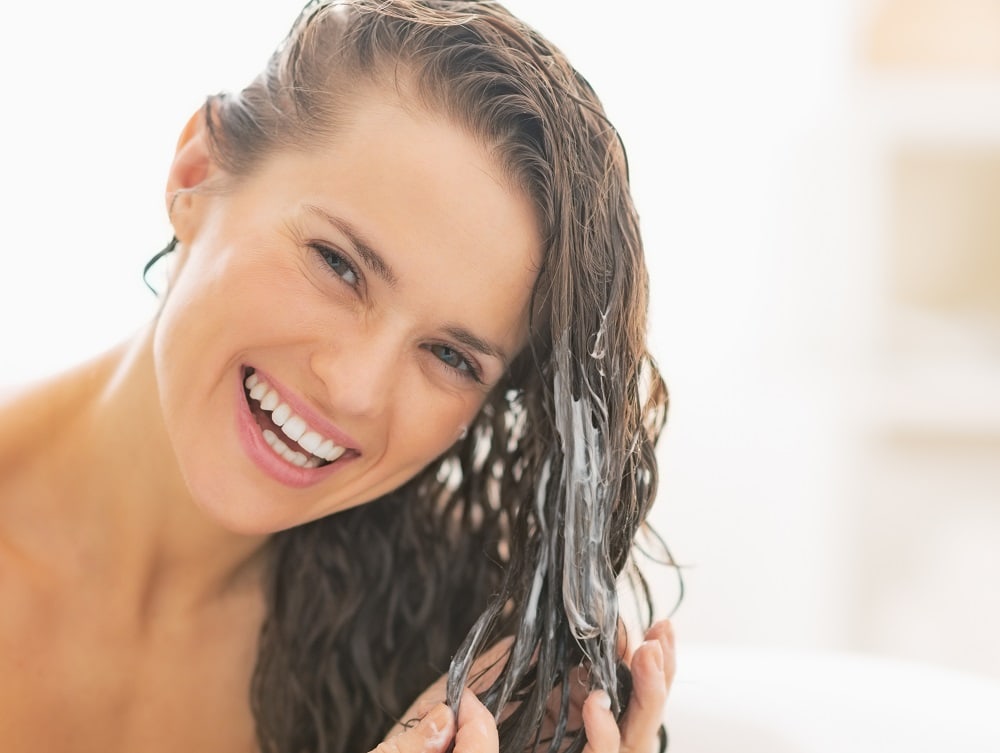
One key factor is making sure your hair is good humidity, keeping soft, flexible and healthy. Achieve this with regular deep conditioning treatments.
Conditioner is essential for curls to stay sleek and smooth, preventing them from becoming dry, brittle or frizzy. In addition, a generous application of conditioner to wet hair helps to coat each strand with essential moisture and nutrients.
Moisturized hair makes it easier to maintain the shape of its curls while preventing damage from environmental factors and styling tools.
If you have curly hair, you know how important it is to maintain a healthy scalp. Conditioner is essential, as it helps replenish the scalp’s natural oils and adds essential nutrients essential for optimal hair health.
Plus, conditioner helps detangle your curls and minimize frizz, making styling more effective. Furthermore, this practice helps prevent split ends and breakage by protecting your delicate hair shafts from damage caused by brushing or heat styling tools.
#4. Avoid overheating
Excessive heat can damage curly hair, causing everything from dryness and breakage to frizz and damage to the hair cuticle. Use products that help with heat relief and techniques that reduce heat exposure to protect your curls from excessive heat damage.
There are several ways to protect your hair from excessive heat. Use a heat protectant spray when using hot tools like a diffuser or blow dryer, be sure not to use settings that are too hot for your hair type. Avoid letting your hair get too wet before using hot tools.
Never use harsh products that contain alcohol or drying ingredients, such as sulfates and silicones. These chemicals can cause damage and frizziness, making the problem of curly hair even worse.
You can keep your curls beautiful and healthy even in high temperatures by following these simple tips and products.
#5. Do not brush curly hair
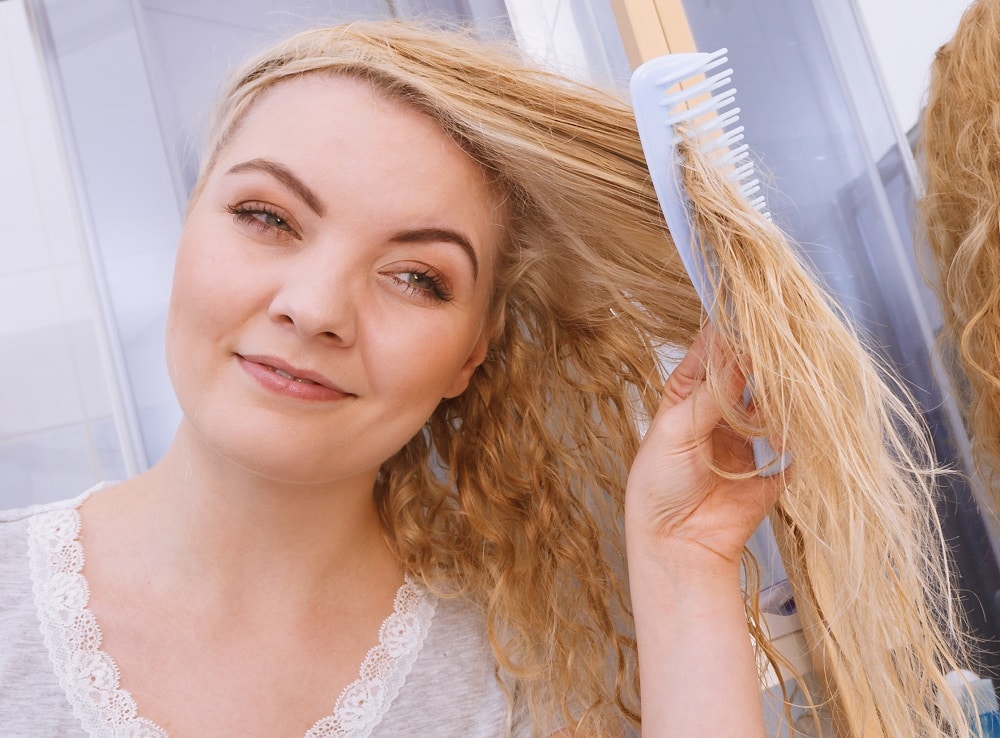
Negative effects occur when you brush curly hair because brushing can lead to tangling and breakage, especially when done excessively or with coarse bristles.
Furthermore, frequent brush strokes can cause friction and damage the delicate outer layer of the hair shaft, resulting in dry curls.
While brushing is not necessarily harmful in all cases, there are alternative methods for maintaining naturally curly hair. For example, instead of using a brush, you can try combing wet or wet locks with a wide comb.
In addition, natural cleaners, such as tea tree oil, can deal with stubborn strains without causing excess damage. Ultimately, for the best results when treating curly hair, pay attention to your favorite styling techniques and choose products accordingly.
#6. Use styling products suitable for your hair type
To choose the right styling products for your hair type and texture, you’ll need to do some research. This is important for two main reasons.
First, by learning about different hair types and how certain products work on them, you can make informed decisions about what to use and when.
Second, spending time researching different products will help you avoid wasting money on products that may not give you the results you’re looking for.
One tool that can be especially useful when styling your hair is a diffuser attachment to your tumble dryer. A diffuser helps direct the airflow over smaller sections of hair at a time, which is ideal when trying to style or tame frizzy or unruly locks.
Another handy tool is a curling wand, which can be used to create tight curls or loose waves, depending on your preference. Additionally, different products like mousses and gels can help define and add texture to your curls, making them flatter and looser.
Whether you have fine or coarse hair, choosing the right styling tools based on your specific needs will help you achieve your desired look with ease.
So do your research and invest in the best products for your unique hair type and texture!
#7. Overnight hair care practice

Several methods can be used to protect and maintain curly hair while you sleep. Perhaps the best known sleep routine technique is pineapple.
A pineapple is where you gently gather your curls on top of your head and use a scrunchie, hair tie or even a loose bandana to hold them in place. This helps minimize friction between your hair and the pillowcase, as it keeps hair away from your face and shoulders.
Another factor in maintaining healthy curls is choosing a suitable pillowcase. Silk or satin pillowcases are often recommended because they create less friction against the hair than other materials, such as cotton.
In addition, some people find that sleeping with their own Natural afro Facing down (rather than sideways) can help reduce frizz and tangles by reducing direct contact with the pillowcase.
Finally, using a gentle conditioner before bed can help keep your curls moisturized throughout the night, which in turn will help minimize breakage caused by friction from movement during sleep.
Summary
Taking good care of your curly hair is essential. Curly hair is often considered high maintenance, but it doesn’t have to be with a good curly hair care routine.
With the right products and techniques, you can achieve healthy, beautiful curls that are easy to manage. Wash your hair often, find a moisturizing hair mask, use products that are right for your hair type, and practice an overnight hair treatment to maintain bouncy natural curls while you sleep.
Those with curly hair should experiment to find what works best for their hair type. To keep your curls looking their best and prevent damage, investing in quality products specially formulated for curly types is key.
We hope these tips help you achieve the best possible look for your curly hair!
You might like it too